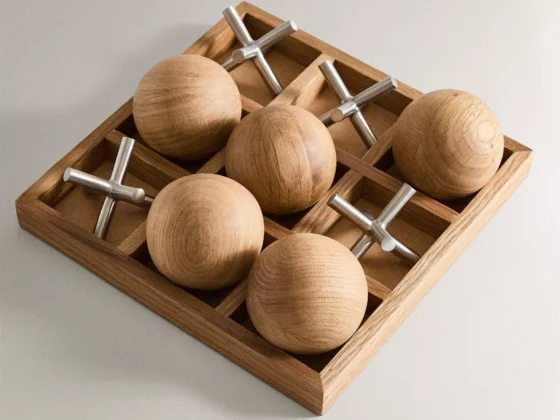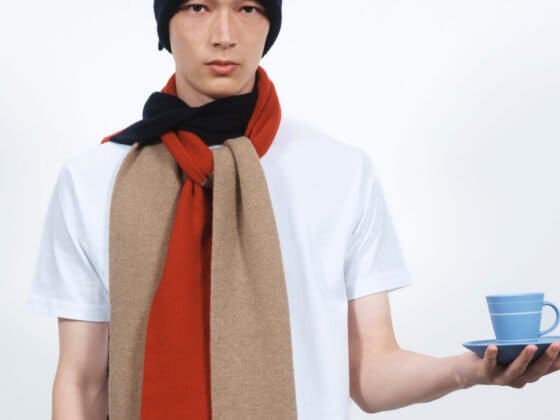Japanese Connections: The Birth of Modern Décor is Louvre Abu Dhabi’s latest exhibition. Presented in collaboration with Musée d’Orsay, it explores the artistic and cultural dialogue between Japan and France in the 19th and 20th century by showcasing paintings, prints and folding screens by renowned French artists and Japanese Ukiyo-e masters.
“For the first time, the exhibition Japanese Connections traces the fundamental contribution of Japanese aesthetics to the development of decorative principles of modern painting in France at the end of the 19th century. This dialogue between East and West celebrates creativity and cross-cultural inspiration between the Ukiyo-e artists and the Nabis painters through a coloured, vibrant and refined expression. We are very pleased to gather this exceptional selection of works and to uncover a crucial moment when Western paintings emancipated from a realistic representation of the world.” – Isabelle Cahn, General Curator of Paintings at Paris’s Musée d’Orsay and Curator of the exhibition.
The influence of Japanese art on European fine arts, sculpture, architecture, performing arts and decorative arts, especially on the Impressionists and Post-Impressionists movements, was so immense that French art critic and collector Philippe Burty coined the term Japonisme; or Japonism in English. It referred to the study of Japanese art and artistic talent by the European artistic fraternity. This is particularly remarkable considering that Japan was strictly off-limits to foreigners for more than 200 years during the Edo period between 1639 and 1858. International trade was restricted to just one port, and the Dutch were the only Europeans allowed to trade there.
The Edo period is also characterised by economic and social stability allowing the population to indulge in the development of art and the mass production of artefacts. Even with all the restrictions, Japanese artefacts such as porcelain and lacquerware remained a sought-after luxury by the European elite. Starting in 1948, and then following the Meiji Restoration of 1868, Japan came out of its self-imposed isolation, and as a result, Japanese art and artefacts began to appear in small curiosity shops in Paris and London.
Ukiyo-e, which means pictures of the floating or everyday world, is a Japanese school of printmaking based on the idea that everything is transient. Its subject matter, as its name suggests, was drawn from everyday life and celebrated the non-heroic. The Ukiyo-e prints on woodcuts were mass-produced, often in excess of 1,000 units, and were thus cheap enough for the average Japanese consumer. The reasonable price-tag also made it possible for them to be imported into Europe, and to be appreciated beyond the elite circles, particularity in Paris, where they were to have their most significant impact.
Although the subject matter and styles varied between artists and regions, all Ukiyo-e works had some common underlying features such as limited depth because of the flattened picture plane, an emphasis on shapes, asymmetrical composition, having flat areas of colour because of not being modulated or varied, not having strong contrasts between light and dark, a dark outline, often using unusual viewpoints and diagonal emphasis in their compositions, featuring calligraphy, and focusing on everyday subject matter.
Ukiyo-e greatly impressed the sensibilities of the Impressionists and Post-Impressionists, who experimented and even emulated the style. They were specifically influenced by the emphasis on design, the simple, everyday subject matter, and the flat blocks of colours. Claude Monet’s Waterlily series is an excellent example of this influence. It can also be found in the works of Van Gogh, Mary Cassatt, Edgar Degas, Gauguin and Toulouse-Lautrec.
The Nabis group of artists were in-turn highly influenced by Impressionists and post-Impressionist styles. Named after the Arabic and Hebrew word for prophet, Les Nabis or the Nabis in English, was a Symbolist cult-like group founded by Paul Sérusier in Paris in the late 1880s. They derived their name, according to theartstory.org, because they wanted: “to be in touch with a higher power, this group felt that the artist could serve as a “high priest” and “seer” with the power to reveal the invisible. The Nabis felt that as artists they were creators of a subjective art that was deeply rooted in the soul of the artist… Searching for beauty beyond that found in nature, they seized upon the mysterious and mystical even if the subject related to ordinary, everyday life.”
The Japanese Connections exhibition is divided into four sections that illustrate the influence of core Ukiyo-e aesthetic principles and include ten prints and three folding screens from Japan alongside 24 paintings and three screens from France. The 12 French and Japanese artists making up the exhibition include the works of five Japanese Ukiyo-e masters: Katsushika Hokusai, Hara Zaimei, Utagawa Hiroshige, Kano Tanshin and Toshusai Sharaku; five French artists who made up the Nabis group of artists: Paul Sérusier, Pierre Bonnard, Maurice Denis, Ker-Xavier Roussel, and Édouard Vuillard; and two French Symbolists: Marguerite Sérusier and Odilon Redon.
The exhibition will be accompanied by programming that celebrates Japanese arts and culture which includes using projections of period photographs and films to offer visitors a walk through Paris at the turn of the 20th century, the city then considered the world’s capital of arts. Visitors can also avail a multimedia guide that is available in Arabic, English and French. Entrance to the exhibition is free with the museum ticket and runs till 24 November.














